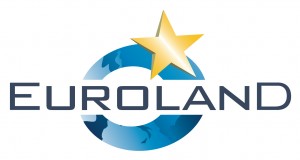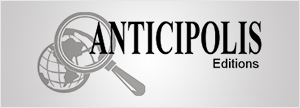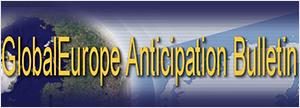Two hundred years ago, on 12 February 1804, died one of Europe’s most foremost thinkers, the German philosopher Immanuel Kant, in his Prussian hometown Königsberg on the Baltic Sea. Today the city is called Kaliningrad and is the capital of the Russian oblast (region) with the same name, after being handed over to the Soviet Union in 1945. With Kant’s most famous works including a treatise on eternal piece as well as moral studies on the “categorical imperative”, reflections which remain of great relevance to this day, it would therefore be interesting what Kant would have made of the new geopolitical situation of his beloved hometown, a Russian outpost soon to be surrounded by EU countries, once the region’s neighbours, Poland and Lithuania, have joined the Union on 1 May 2004.
This year’s anniversary of Kant’s death was remarkable in more than one way, since it was commemorated in the presence of the German Foreign Minister, Joschka Fischer, the first German Foreign Minister ever to visit post-war Kaliningrad. On the same day, Fischer also inaugurated the new German General Consulate in Kaliningrad, an epochal step in the post-Soviet history of the Russian enclave, given that German involvement in Kaliningrad has always been seen as highly sensitive.
{{Berlin in reverse}}
The anniversary of Immanuel Kant’s death and Joschka Fischer’s visit to Kaliningrad both attracted renewed media attention to the Russian enclave, three months ahead of the EU’s Eastern Enlargement on 1 May 2004, which will turn the region into a Russian island within fortress Europe, a kind of Berlin in reverse.
Although the region will then be physically surrounded by EU States, it will not be part of the world’s biggest economic and customs union, a situation which has already led to years of intense debate and negotiations about the future of Kant’s hometown [[Kilian Strauss, “One up for Kaliningrad”, June 2001, www.balticinstitute.se, Stockholm]]. Even if the new EU members will not yet be part of the Schengen zone after their adhesion this year, the bow wave of their membership has already had an impact on relations with Kaliningrad.
Visa free circulation in and out of Kaliningrad with both Poland and Lithuania was abolished in 2003 in the wake of an agreement reached between the European Union and Russia at their joint summit in November 2002, which created a “Facilitated Travel
Document” (FTD) for Kaliningrad citizens travelling to mainland Russia (cf. below). Although this arrangement fell short of the visa-free circulation demanded by Russia, it showed that the Schengen agreement could be interpreted more flexibly than the EU had originally pretended, accommodating a situation as unusual and unprecedented as that of Kaliningrad.
Yet the agreement as well the recent celebrations have not managed to overshadow the complex range of problems Kaliningrad is continuing to face, ranging from transit questions over the environment to trade flows, regional integration and the economy in general.
{{Economic headaches}}
One of Kaliningrad’s biggest headaches today remains its economic situation. With living standards still below that of its neighbours (90% of the level of Lithuania, 75% of Poland), with very little foreign investment due to a lack of interest by investors and a lack of perspective, Kaliningrad faces an uncertain future, despite recent economic improvements.
After a strong fall in output in the early 1990s (80 per cent, compared with 50 per cent in the rest of Russia), the local economy recovered swiftly, especially since the financial crisis in 1998. Growth has on average reached 9% annually, peaking at an impressive 14.4% in 2000 [[I Samson, “A new look at [the] Kaliningrad Region, Grenoble University, 2002]], outpacing growth in mainland Russia of an average 6% annually. Foreign investment has also been up over the last few years, although more modestly.
The recent growth and the openness of the region to trade and investment has resulted in attracting some 2,000 foreign companies or joint ventures, mostly of Polish, Lithuanian and German origin. Yet although Kaliningrad features a strong SME scene, most companies are involved in small trade or processing, resulting in overall rather modest inflows of capital (EUR 35m in 2003). Among the few investors of international relevance are BMW of Germany and Thomson of France.
The main concern among investors is the lack of stability and predictability in the region, especially with regard to the rules governing the special economic zone, which can be revoked by Moscow at any time. Moscow’s bid for the WTO, which does not consider favourably local duty-free zones, is another element of uncertainty. Investors also complain about the lack of transparency with regard to rules and regulations, an almost notorious lack of information and rampant corruption coupled with a shadow economy which reaches between 60-95% of official GRP [[GRP : Gross Regional Product; ibid.]]. The insufficient regional integration of the oblast, especially with regard to its two immediate neighbours, Poland and Lithuania, also poses serious problems, with both of which the development gap is growing by the year.
The key concern in Moscow these days is that economic differences with its neighbours will become so huge that Kaliningrad will turn its back on Russia and knock on Europe’s doors – no surprise with nominal wages in Kaliningrad standing at half Lithuania’s and a third of Poland’s [[The Economist, 20 November 2003]].
The main worry for the European Union is the impact the economic discrepancy has on society, especially on the spread of illegal activities, such as the smuggling of arms, drugs, stolen cars and women, the above mentioned high levels of corruption in the enclave and the rate of HIV/AIDS, which is among the highest in Europe
Contrary to many optimistic statements in the past, EU accession of Kaliningrad’s neighbours will not make the situation easier. The amounts of aid provided to Kaliningrad by the EU over the last ten years may look impressive at EUR 30m [[Valery Biryukov, Rosbalt News Agency. Kaliningrad]], but pale considerably when put next to the EUR 1bn that Poland receives annually through the Phare, ISPA and SAPARD Programmes.
The best way of addressing the current problems in Kaliningrad would be by integrating the region further into the Baltic Sea region, both through trade and cross-border cooperation, and by expanding the existing EU-Russia dialogue which could turn Kaliningrad into a genuine “pilot region” for East-West relations. Yet before the pilot can start the plane’s engine, a major stumbling block in these relations needs to be resolved first : the question of travel across Kaliningrad’s borders.
{{The Kaliningrad Border Problem}}
The 18th century mathematician Leonhard Euler is often associated with the “Königsberg bridge problem”, which asks to find a path around the seven bridges of the German Königsberg that crosses each bridge exactly once and ends again at the starting point. Unfortunately, there is no solution to the problem, despite two centuries of research. The situation facing today’s Kaliningrad may not be quite as complex, but a solution often appears as elusive, especially with regard to its borders.
The fact that EU Enlargement would one day pose a problem to Kaliningrad only appeared to dawn upon the European Union in the year 2000 after massive lobbying from the region’s policymakers. Until then, the dominating opinion in Brussels had been that “Enlargement is good for everyone, so it must be good for Kaliningrad as well”.
Eventually, however, the European Commission reacted and developed its first discussion paper on the problems facing Kaliningrad, published in a communication to the Council on 16 January 2001 under the title “The EU and Kaliningrad” [[http://europa.eu.int/comm/external_relations/north_dim/doc/com2001_0026en01.pdf]]. This led to growing awareness about Kaliningrad and its problems, accompanied by a series of events devoted to the region. The Swedish EU Presidency in the first half of 2001 also contributed significantly to the debate, by inviting the Russian President Vladimir Putin to the EU Summit in Stockholm in March 2001 [[Communiqué of the Stockholm summit: http://www.eu2001.se/static/eng/stockholm_summit]]. This was followed by the second EU Foreign Ministers’ meeting on the Northern Dimension in Luxembourg on 9 April 2001, where Kaliningrad was discussed within the framework of the Northern Dimension.
A series of high level events in Kaliningrad and elsewhere followed, among which a conference on cooperation in the Baltic Sea area with the participation of the Finnish Foreign Minister, parliamentary hearings on the future of Kaliningrad as a possible pilot region [[www.kaskad.koenig.su of 16 February 2001]], a visit by EU External Affairs Commissioner Chris Patten and the late Swedish Foreign Minister Anna Lindh [[Süddeutsche Zeitung, 15 February 2001]], as well as a visit by the then Lithuanian President, Valdas Adamkus. As a result of this increase in attention to the enclave, Russia, after initial hesitation to deal with issue internationally, finally accepted to discuss the region with the European Union. In 2002, the importance of the topic of rose further, leading to negotiations between the EU and Russia over the future status of travel in and out of the region.
This constituted a key step ahead, given that until then, Kaliningrad residents could travel visa-free into both Poland and Lithuania, a situation which was expected to change when both countries join the EU and ultimately the Schengen area. Russia asked for the special regime to be maintained, with the ultimate goal of visa-free travel between the entire European Union and Russia. Yet Schengen did not allow any “special regimes”, resulting in September 2002 in a proposal by the European Commission [[Commission Communication to the Council on 18 September 2002, entitled “Kaliningrad: Transit”]] on a so-called “Frequent Travel Document” (FTD) for the residents of the enclave which would allow them to cross Lithuania without having to apply (and pay) for an official Schengen visa. This proposal allowed the 10th EU-Russia Summit on 11-12 November 2002 to adopt a “Joint Statement on Transit between the Kaliningrad Region and the Rest of the Russian Federation”, which included the suggested FTD. In the Statement, both sides explicitly acknowledged “the unique situation of the Kaliningrad Region as part of the Russian Federation but separated
from the rest of the Federation by other states” [[http://europa.eu.int/comm/external_relations/russia/summit_11_02/js_kalin.htm]].
The agreement was followed by trilateral negotiations between the EU, Russia and Lithuania on the operational modalities of the FTD. A deal was finally reached in April 2003, allowing the FTD scheme to come into force on 1 July 2003.
By that date, a number of changes had already taken place with regard to Kaliningrad
transit :
As of 1 January 2003, CIS citizens require a transit visa to travel to Kaliningrad through Lithuania and since 1 February, Russian citizens need visas on non-Russian trains to the region.
In May, Russia and Lithuania finally signed a long awaited readmission agreement, an important precondition for further talks on any change to the current visa regime.
On 1 July 2003, the new travel regime finally entered into force. The regime introduced two types of documents needed for crossing Lithuania to and from mainland Russia: the Facilitated Transit Document (FTD) and the Facilitated Railway Transit Document (FRTD).
– The FTD applies to people crossing Lithuania by car or bus. The document is issued by Lithuanian consulates in Russia for a period of one year. It is free of charge for all Russian citizens.
– The FRTD is issued free of charge for people crossing Lithuania on a Russian transit train. There are two such train routes from Kaliningrad at present – to Moscow and to Saint-Petersburg. Until 1 January 2005, it is possible to receive an FRTD with a Russian internal passport. After this date a foreign passport will be needed. [[Evgeny Vinokurov, Kaliningrad’s Borders and Transit to Mainland Russia, CEPS, December 2003.]]
One of the key questions in connection with the new travel regime was who will bear the cost incurred to Lithuania because of the new requirements. In an exception to Phare rules (which usually require co-financing), the EU agreed to fully carry the costs of EUR 12m, as confirmed in a Financing Memorandum signed on 28 February 2003.
On 1 October 2003, Poland followed suit by introducing visa requirements for Russian citizens. After Russia had rejected extending the model of non-reciprocal visas for Ukrainians, the two sides introduced a bilateral visa regime with a special clause for Kaliningrad, under which residents from the enclave receive Polish visas free of charge. Poles have to pay for Russian visas, whether they go to Russia proper or to Kaliningrad.
The biggest problem Poland is facing in this context is managing the flood of visa requests at its Consulates in Russia, especially at its Kaliningrad representation, which is leading to long queues. Yet whereas Poland has upgraded its facilities in the enclave in order to meet an increased demand, Russian consulates in Poland and Lithuania have received no reinforcement, leading to long delays in obtaining Russian visas. [[ibid]] Russia took however into account the changing situation in the enclave by appointing a new special representative for Kaliningrad, Igor Shuvalov, in October, replacing Dmitri Rogozin.
Substantial progress on Kaliningrad’s regional integration was eventually made in the last few months of 2003 when in September international flights to Denmark were resumed after a two year break, followed by a resumption of a train link to Berlin in December.
Finally, on 1 January 2004, the first German Consul ever to be appointed to the region, started his assignment in a Kaliningrad hotel.
{{The Kaliningrad myths}}
One of the least flattering recent characterisations of Kaliningrad was delivered by Swedish Prime Minister, Göran Persson, when he quipped in 2000 that “there is no problem that Kaliningrad does not have” [[Financial Times, 15 December 2000, Sweden urges action over Kaliningrad]]. And Kaliningrad can indeed not complain about an absence of problems. Yet at the same time, negative headlines have provided the region with a stigma that it does not deserve. The result is an overdose of negative myths about Kaliningrad which are difficult to rebut, such as the image of a faltering economy (cf. above), the necessity of giving Kaliningraders easy access to mainland Russia (more of them have been to Poland and Germany than to Russia itself) and the myth of Kaliningrad’s isolation. Judged by Russian standards, Kaliningrad is everything but isolated, given that it can boast reasonable road and rail connections to its Baltic neighbours as well as to Poland. Yet it suits Moscow to complain about the region’s isolation, placing the blame squarely on the EU, which provides ammunition to Russia’s calls for “compensation” due to losses suffered from EU Enlargement. Thus Kaliningrad will remain a valuable bargaining chip for Moscow in its negotiations with Brussels, thereby sadly removing its badly needed regional economic integration into a more distant future.
{{Conclusion}}
Although the place of Kaliningrad has clearly risen on the European agenda over the last few years, the problems facing the region are still far from being solved. Much of this is due to Russia’s hesitation to grant the region more leeway which could help reinvigorate its economy. This attitude is compounded by a renewed Russian assertiveness and Moscow’s more general reluctance to cooperate internationally, e.g., over issues such as Moldova. As a result, there is a genuine risk that Kaliningrad could become a stepchild of EU-Russia relations instead of a pilot region, to which it aspires. For the EU therefore, Kaliningrad represents a genuine dilemma. It would like to assist the region by furthering its regional integration, yet at the same time it is bound by Moscow’s hesitation to let just that happen. While it cannot grant it special economic status without the consent of Moscow, it is also loathe to open Kaliningrad’s borders further due to rampant smuggling, corruption and other unwholesome activities in the enclave. Yet it is also clear that Kaliningrad’s problems are Europe’s problems, given that already now Kaliningrad is more open to its European neighbours than Russia itself. The region therefore needs more involvement from Europe, but not only from the EU, but also the OSCE and the Council of Europe [[H-M. Birkenbach, Für ein europäisches Haus in Kaliningrad, SCHIFF, December 2003]]. In this context, Kaliningrad has an obvious difficulty in finding its place on the map. As an artificial territorial entity which is constantly held back by Moscow, it has not been able to develop a genuine regional identity. Yet its future, despite opposition from Moscow, lies with more European integration, implying that the future development of the enclave is likely to turn into a test case for political will in Moscow. Finally, in 2005 Kaliningrad will celebrate its 750th anniversary. Yet the question is, what exactly it will celebrate : the foundation of Königsberg, of Kaliningrad or simply of Immanuel Kant’s hometown ?


 LEAP2040 Toutes les informations et archives Europe2040
LEAP2040 Toutes les informations et archives Europe2040


